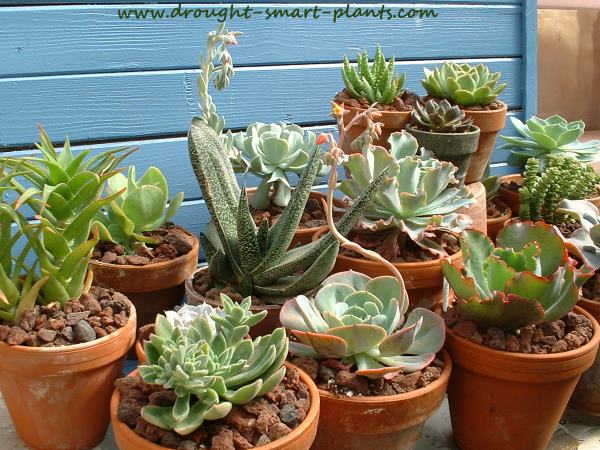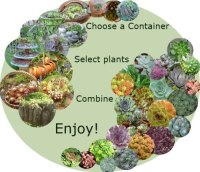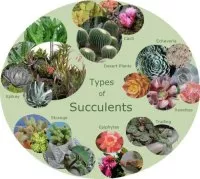Add Some Gorgeous Succulents to your
House Plant Collection
Succulent house plants are generally best in their own display – due to their special watering requirements they don’t mix well with other jungle type plants that we grow as house plants.

Having an indoor greenhouse in a sunny side of the house gives the indoor gardener a place to grow many succulent houseplants.
If the light is bright and filtered, most succulents thrive in the warmth. The best orientation is to the east or south.
West light is hot and too bright, even for these desert plants; even though they originate in brightly lit areas they can’t take the sun shining through windows, which will magnify the intensity – curtain filtered light, or artificial fluorescent light is best to avoid sunburn.
When you move the plants outdoors in the summer for some fresh air make sure to treat them like seedlings and harden them off – let them get acclimatized to the brighter light by giving them some shelter before exposing them to full sun.
Even plants that evolved in extreme light and heat will be prone to sunburn.

Indoor houseplants in particular like a well ventilated atmosphere; succulents absolutely demand it.
High humidity, and poor ventilation may not kill succulent house plants outright, but they will never perform well under these conditions.
If you can at least stir the air around a little, this will prevent rotting of the foliage, and take some of the moisture away from the soil.
Watering is on such a rare schedule, unlike many jungle type plants that require constantly moist soil. Your watering schedule will be determined by the humidity around the plants and how quickly they dry out between waterings.
If you get a succulent plant for a gift, say around Christmas you may need some help with caring for it. Find out about keeping some of the most popular Christmas Succulents happy here.
Succulent plants will do best if they’re spaced out a little, and their favorite type of pot is a terracotta clay pot, due to its ability to exchange air between the soil and the atmosphere.
The fact that the clay is porous also helps the soil to dry out more quickly. Find more great ideas of what to use for planting your succulent plants in by clicking on the picture:
Succulents in general require a drying of the soil to prevent rotting of the roots.

Best Succulent House Plants:

Echeveria and their cousins, x Graptoveria, x Graptopetalum and Pachyphytum are some of the most attractive of all the succulent plants.
All these genera, including Sedum can interbreed, forming some interesting and beautiful succulent house plant choices.
Aloe – choose from some of the smaller clump forming types like Aloe andongensis, Aloe ferox, Aloe juvenna and others.
The larger types can quickly outgrow your space, and are best grown outside on a warm patio.
Aloe plants are renowned for their spiky and splashed appearance, making a perfect foil for the fleshier leaved types of succulents.
Gasteria – similar in growth habit and superficial appearance to Aloe, these are generally slow growing and very well behaved.
With their spotted and splashed appearance, and fan shaped growth habit, they form a foil or background to some of the brighter and flashier miscellaneous succulent plants.
There are also some amazingly beautiful generic hybrids between Aloe and Gasteria, known as x Gasteraloe.
Many novice succulent plant growers have difficulty with these as they are absolutely adamant about their watering regime and will give up and die if this is not followed religiously.
Somewhat challenging in their need for dormant periods a couple of times a year, these are best grown on their own due to these strict requirements.

Aeonium – rosette forming, these glowing beauties resemble Echeveria, with an important difference; they are monocarpic which means once they send up a bloom stalk and flower, the rosette will die.
Hopefully, they will have formed several to many smaller pups to take the place of the mother plant.
Crassula – not just Jade trees, Crassula come in many forms and sizes, from tree or shrub size to miniature ground covers.
In the right situation, sometimes they’ll bloom with pale pink to white clusters of blooms.
You may choose to have a representative sampling from all these – or specialize in only a few.
No matter which you find yourself drawn to, your succulent house plant collection will be fascinating and beautiful.



